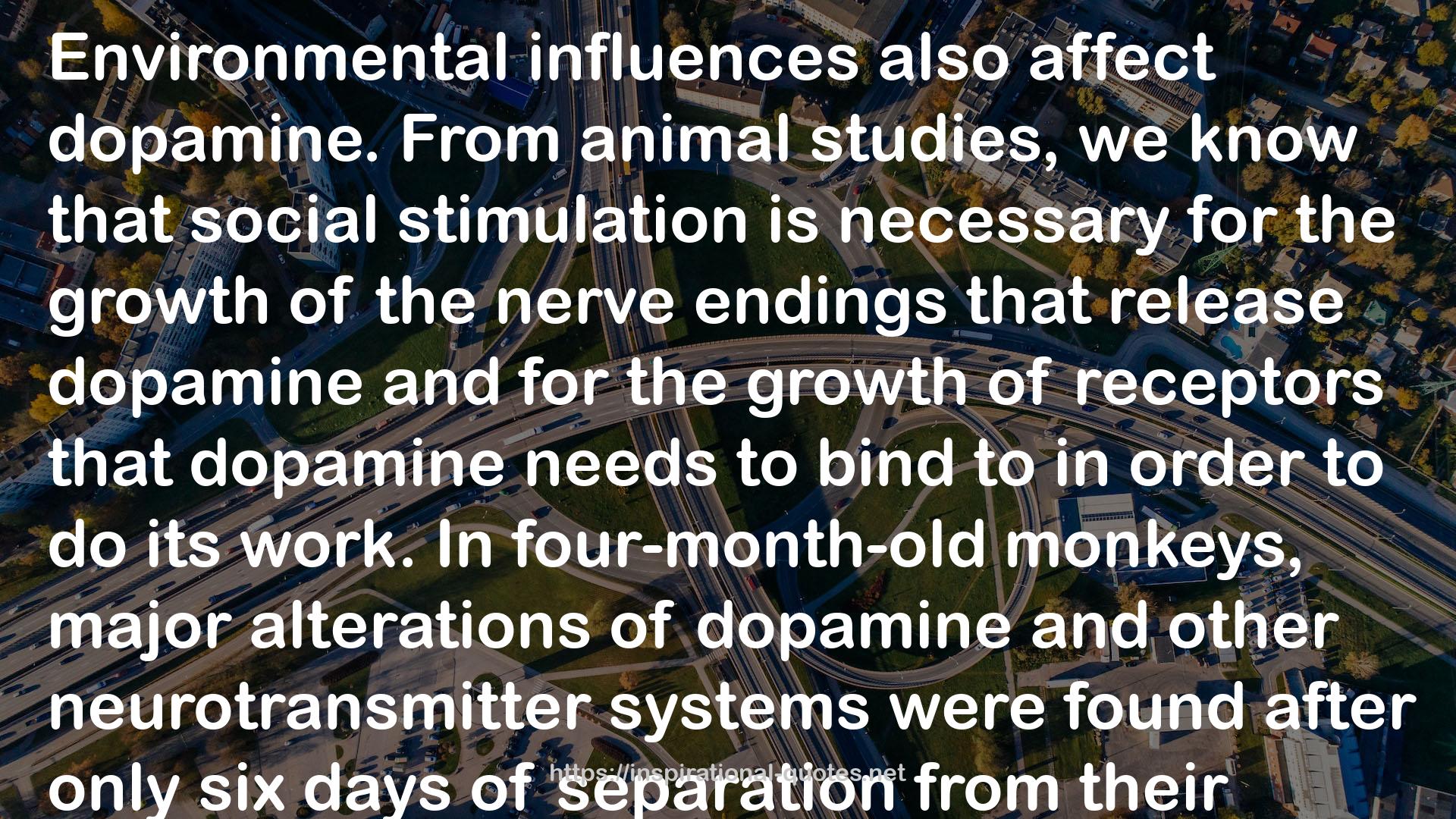" Environmental influences also affect dopamine. From animal studies, we know that social stimulation is necessary for the growth of the nerve endings that release dopamine and for the growth of receptors that dopamine needs to bind to in order to do its work. In four-month-old monkeys, major alterations of dopamine and other neurotransmitter systems were found after only six days of separation from their mothers.
“In these experiments,” writes Steven Dubovsky, Professor of Psychiatry and Medicine at the University of Colorado, “loss of an important attachment appears to lead to less of an important neurotransmitter in the brain. Once these circuits stop functioning normally, it becomes more and more difficult to activate the mind.”
A neuroscientific study published in 1998 showed that adult rats whose mothers had given them more licking, grooming and other physical-emotional contact during infancy had more efficient brain circuitry for reducing anxiety, as well as more receptors on nerve cells for the brain’s own natural tranquilizing chemicals. In other words, early interactions with the mother shaped the adult rat’s neurophysiological capacity to respond to stress.
In another study, newborn animals reared in isolation had reduced dopamine activity in their prefrontal cortex — but not in other areas of the brain. That is, emotional stress particularly affects the chemistry of the prefrontal cortex, the center for selective attention, motivation and self-regulation. Given the relative complexity of human emotional interactions, the influence of the infant-parent relationship on human neurochemistry is bound to be even stronger.
In the human infant, the growth of dopamine-rich nerve terminals and the development of dopamine receptors is stimulated by chemicals released in the brain during the experience of joy, the ecstatic joy that comes from the perfectly attuned mother-child mutual gaze interaction. Happy interactions between mother and infant generate motivation and arousal by activating cells in the midbrain that release endorphins, thereby inducing in the infant a joyful, exhilarated state. They also trigger the release of dopamine. Both endorphins and dopamine promote the development of new connections in the prefrontal cortex.
Dopamine released from the midbrain also triggers the growth of nerve cells and blood vessels in the right prefrontal cortex and promotes the growth of dopamine receptors. A relative scarcity of such receptors and blood supply is thought to be one of the major physiological dimensions of ADD. The letters ADD may equally well stand for Attunement Deficit Disorder. "
― Gabor Maté , Scattered Minds: The Origins and Healing of Attention Deficit Disorder
